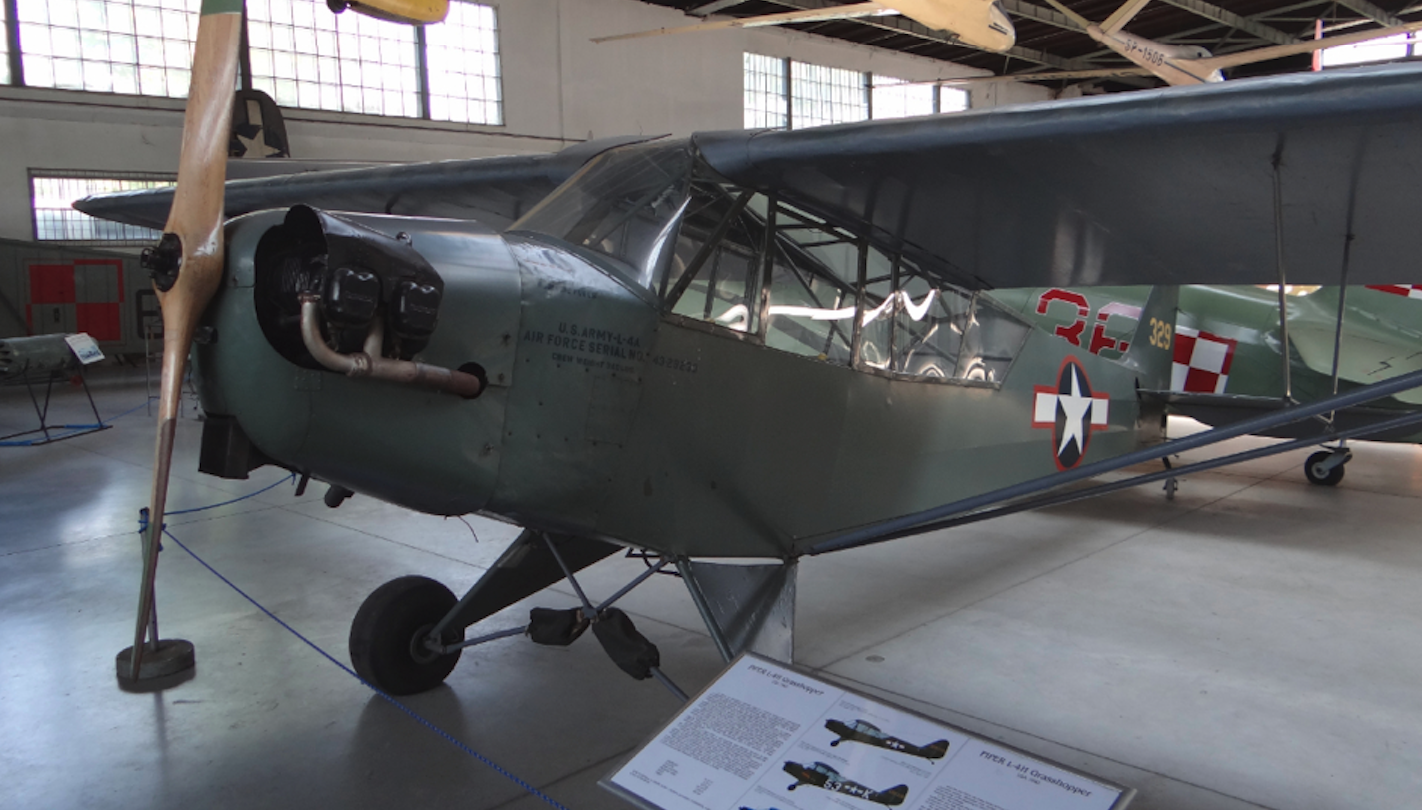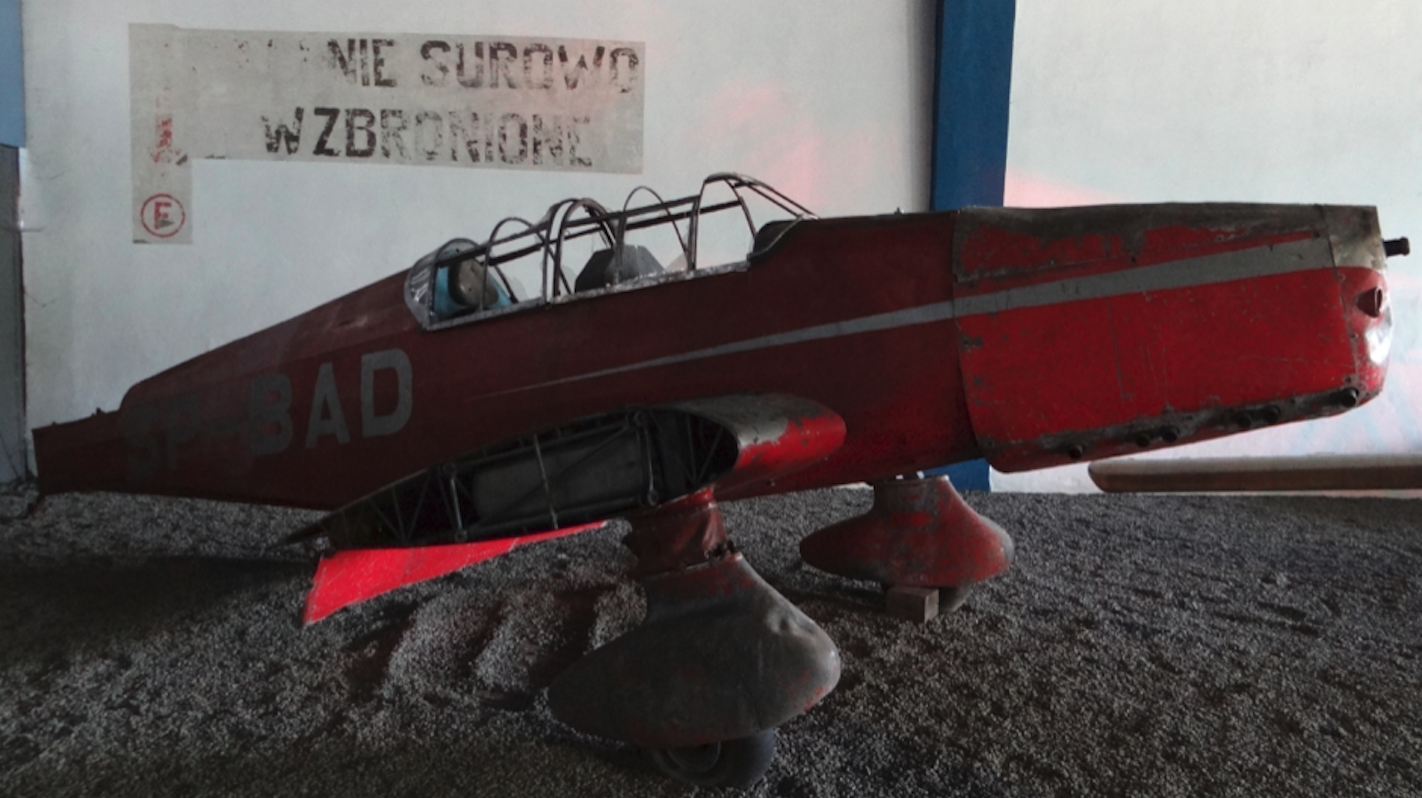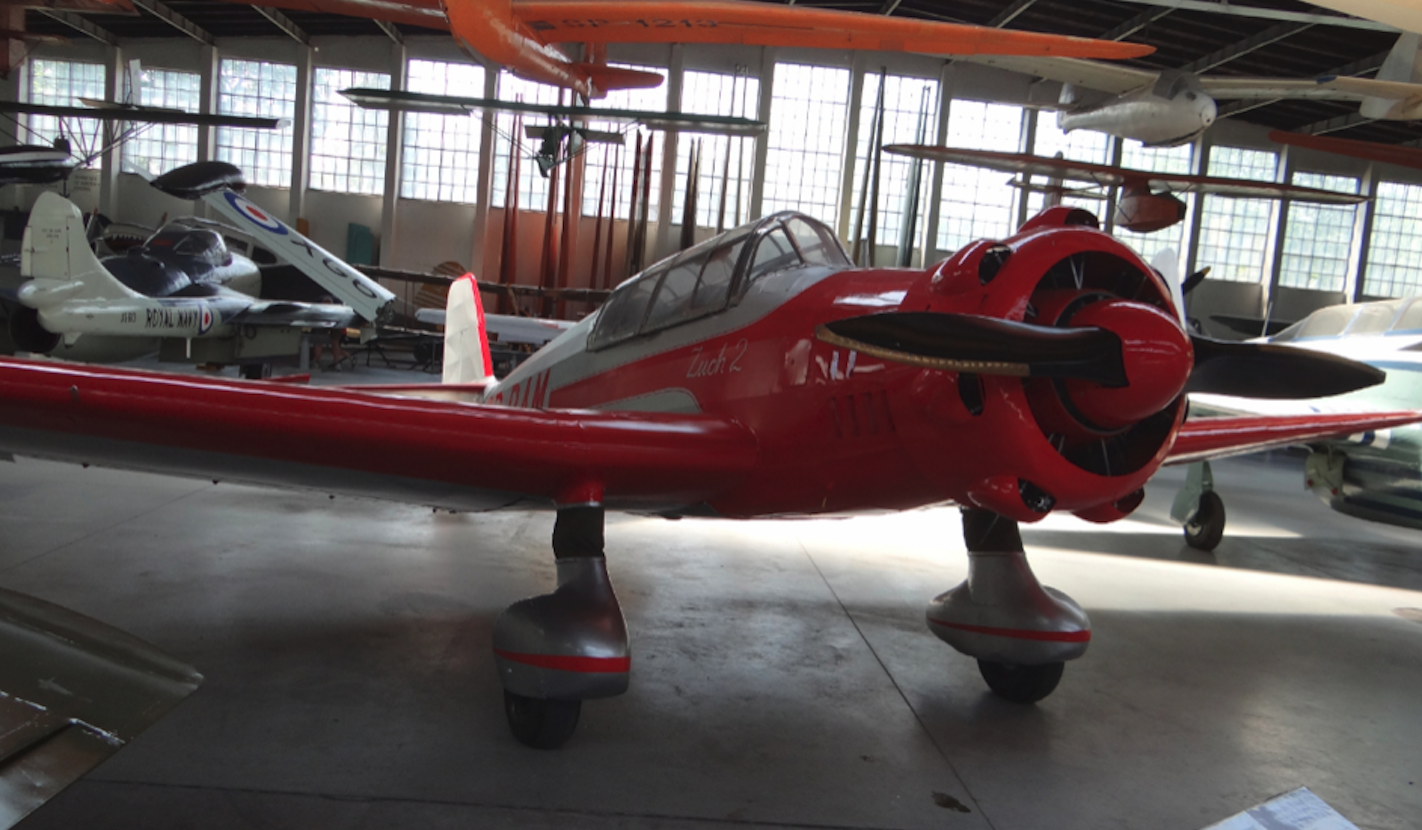Kraków 2017-05-29
Aviation training in Poland.
Military Aviation Technical School in Boernerowo. 1945.
The process of organizing the Aviation School in a new location, after moving from Zamość to Warsaw, took a long time. From July 1945 to April 1946. The school occupied the barracks of the pre-war artillery regiment. The brick buildings were built in the 1930s and were relatively new. Although the barracks were partially destroyed, the conditions here were still better than in Zamość. The soldiers’ chambers were equipped with beds with linen. Classes were conducted in two training buildings. For this, a makeshift school yard was also prepared, where planes and mock-ups were gathered.
The end of the Second World War caused the demobilization of most of the soldiers. But in military education, the process was reversed. Everything was aimed at consolidating the communist power. The communists could not allow the return of Polish aviation specialists from the West, because they had "wrong" social and political models. Therefore, they had to train their own staff. One of the effects of these activities was the extension of the training of mechanics in the WTSL to 12 or 24 months (depending on the specialization) and the creation of the School of Junior Specialists, training students on courses of only 6 or 12 months. Schools of Junior Specialists were also established at aviation divisions.
On September 25, 1945, another (third) group of 104 mechanics and foremen was promoted. First time in Warsaw in Boernerowo. In October, 239 students completed the course. On December 22, 1945, 226 students completed the course, including the first group of photo-lab assistants.
1946.
On January 6, 1946, the sixth group of students (226 people) completed the course, including 33 people obtained the officer rank. It was the second officer promotion in the school’s history. The act of promotion was made by Lieutenant General Władysław Korczyc.
At the same time, a decision was made to shorten the education at WTSL to 11 or 22 months. The departure of some of the Russian staff to the CCCP forced their replacement with Polish officers. It was decided to recruit the missing staff by training non-commissioned officers already with experience, during 5-month courses. These courses were organized from January 1946, and in fact were very short-lived. Even only 7 days. In 1946, specialists for airplanes were trained; Po-2, Yak-9, Pe-2, Il-2, Il-10, Tu-2, C-47, Li-2. On March 18, 1946, the Polish officer, Col. Bernard Adamecki, was appointed the commandant. (born 1897 – murdered by communists on August 7, 1952).
On May 4, 1946, there were changes to the training program. The school switched to peacetime training. The training cycle was to be extended and its level raised. These changes were led by the new Commandant of the school, who perfectly remembered the pre-war training system. However, this did not happen. On May 16, 1946, a third promotion took place, with 38 graduates. At the same time, the name of the school was changed to the Technical School of Aviation of the Polish Army. The demobilization of some soldiers resulted in gaps in the staffing of positions in the regiments. That is why the Polish Army Aviation Commander, by Order No. 0121 of October 5, 1946, ordered the training time for mechanics to be shortened to 15 months, and for junior specialists to 4 months. The number of soldiers in TSL WP was increased to 1,867.
1947. Technical Aviation School.
From the spring of 1947, there was a return to supplementary courses for specialists and their promotion to officer ranks. Courses were organized as needed. In April 1947, the school was transferred to a new job number 20/78 (permanent staff 385 people, 680 trained mechanics, 300 junior mechanics in training). There was also a slight change of the name of the school (without the footnote of the Polish Army). On July 13, 1947, another officer promotion took place. 5 graduates were granted the rank of second-lieutenant. On October 26, 1947, another group of 129 people completed the course, and 5 received an officer’s promotion. In December 1947, the school was fully staffed on a regular basis. The staff was 404 people. Condition of change of 870 people. Of the 180 officers, 12 were still Russians. During this period, competition was initiated among the students. The didactic base was constantly improved. There were more and more teaching aids, which were often carried out on the spot at school. The Polish Aviation Command highly appreciated the work and commitment of its commander, Colonel Pilot Bernard Adamecki.
1948.
In May 1948, Major Navigator Mieczysław Stachura-Michalski became the commandant’s assistant. At the end of 1948, commandant colonel Bernard Adamecki was immediately removed from his post. It seemed strange, because the colonel was appreciated by his superiors and subordinates, and he was to be promoted to general. The communist machine of the security office was cleaning high positions in the People’s Republic of Poland from people who could lead Poland from the People’s Republic of Poland to the Republic of Poland. And it does not matter that the soldiers gave their forces to the new Poland with great commitment. In addition to individual attacks by the communist secret police, systems of repression against the entire nation were also created. In relation to candidates for military schools, the framework of social affiliation has been defined. According to the Order of the Minister of National Defense of April 30, 1949, 60% of the qualified candidates should come from the working class, 30% from the peasant and only 10% from the working intelligentsia. It was not until January 13, 1949, Colonel Michał Jakubik was appointed in the place of the commandant, Colonel Bernard Adamecki. In 1948, the training of reserve technicians began at the Aviation Technical School (Bernerovo). After a 12-month course, they received the rank of reserve ensign, underwent internships in air regiments and were released to civilian status. One of the goals of such training was to prepare the staff for Aeroclubs and LOT Polish Airlines.
1949.
The approaching era of turbojet powered airplanes has forced the introduction of new training systems and programs, and above all an increase in the number of new specialty technicians. As early as March 1949, during the briefing of commanders of military schools, the decisions of the Minister of National Defense regarding the expansion of military education by increasing the number of schools and the number of people in training were handed over. In addition, it was ordered to shorten the training period, which was the effect of the Russian megalomaniac, where quantity was always preferred over quality. These actions showed their disastrous effects after a few years, with an increase in accidents and catastrophes.
Jedna szkoła techniczna, kształcąca na poziomie niższym i średnim, to było za mało. Zdecydowano, w końcu grudnia 1949 roku, o utworzeniu wyższej wojskowej szkoły technicznej. Na siedzibę nowej szkoły wyznaczono Boernerowo, a Techniczna Szkoła Lotnicza musiała zmienić miejsce. Ponownie przeniesiono ją do Zamościa.
Civil aviation training.
On August 5, 1945, the Gliding School was opened in Borowa Góra near Piotrków Trybunalski. On August 19, 1945, the Pomeranian Aero Club in Toruń was reactivated. In September 1945, flying clubs were launched in Warsaw and Kielce. At that time, the first Polish-language textbook "UT-2 aviation training course" was published. On October 10, 1945, the Aero Club of the Republic of Poland was reactivated. Local Aeroclubs undertook mainly gliding and parachute training. However, the structures of the Aero Club were disturbed by top-down control by the communist organization "Służba Polsce".
Ligota Dolna near Kluczbork. 1946.
With the beginning of the Polish People’s Republic, attempts were made to resume aviation training for civil aviation. In May 1946, the Civil School of Pilots and Mechanics of the Ministry of Transport began operating in Ligota Dolna near Kluczbork. It was the only school of this type in the Polish People’s Republic. The school was established in pioneering conditions, occupying the former German airport buildings. The school received 24 Po-2 planes, which were largely used up. The school’s staff was gathered, which consisted of 16 people, including mechanics. The head of the school was Lt. Col. Res. Navigator Zenon Romanowski. Lieutenant Leon Kubarski was the head of the training. The instructors and lecturers were a kind of kaleidoscope of the Polish Aviation. Among them were pilots from the RAF, soldiers from the Home Army, pre-war aviators and airmen trained by the communist authorities.
At the beginning, it was not known how long the individual courses would last. It depended on the efficiency of the flying equipment, the amount of fuel obtained, and weather conditions. The first camp started in May 1946 and was of a pilot nature. It covered mainly pre-September LPiPG students who did not manage to obtain a license before the war. Recruitment was based on testimonies of witnesses or opinions of centers already reactivated. Admitting a student was preceded by a theoretical entrance examination.
The first camp was completed by 72 pilots and mechanics in August 1946. The second tour was completed by 76 pilots and mechanics in October 1946. In the spring of 1947, a third course was started.
In July 1947, one of the two hangars burned down as a result of a lightning strike during a storm. Several Po-2 planes were destroyed. Thus, the training conditions deteriorated. At that time, only 12 planes were available. Throughout 1947, 110 pilots were trained.
In 1948, the training base improved significantly. The school had 17 Po-2 aircraft, one Piper Cub for training flights and one Polish Szpak 4T aircraft intended for navigation flights. At the same time, the School was handed over to a communist organization called "Universal Organization Służba Polsce". The name of the school was changed to the Training Center for Pilots and Mechanics of the General Organization Służba Polsce. Initially, the instructors and lecturers who had anything to do with the West and the Home Army were thrown out of the school. The future candidates for the course were also accepted. First of all, they had to get a positive opinion from one of the communist organizations. They should also come from the ranks of workers and peasants. As you can imagine, the level of training has dropped significantly. A new training program with socialist upbringing as the main aspect was approved. The flight training program was taken from the Russian Po-2 training manuals. Fortunately, the training cycle has been extended. During the winter, the students participated in TKS (Theoretical Airplane Courses). Students were called after the communist – Junaki.
The first course in 1948 showed huge shortcomings in the education of the students. Many of them did not even graduate from the 4-year primary winter school. Junaków needed to be taught the basics of algebra and geometry. For example, you had to explain to them what a right angle was. And what to explain to them what a wing profile is. Maybe someone will find this information shocking, but this is how socialism was built. However, we must remember that in this way the way was opened for young people from the social lowlands. But why has the way of more gifted and more educated youth been closed? The emphasis in the School is on self-education and mutual training. As a result, there were 10 days of basic and aviation training per one flying day. The flight hours for simple piloting have been increased, at the expense of reducing flying hours for navigation.
In 1948, 126 students started the course and 106 graduated, which should be considered a success anyway. It wasn’t better in 1949. The head of the training at that time was Wacław Kozielski, and the instructors were Adam Flis, Jan Kalfas, Jan Nowak and Jan Sojska. At the turn of 1949/1950, the school was moved to Wrocław to the Gądów Mały airport and the Nowa Wieś airport. There were much better social and living conditions in Wrocław.
In 1950, the Aviation League was separated from the Polish Service Organization. The school then received a new name – Aviation Training Center of the Aviation League in Wrocław. The training program was extended to include glider training and broadly understood navigation. The number of hours spent in flight has increased to 30-40 hours. There were additional requirements for students for airplane training: a full elementary or vocational school and a completed gliding course with a minimum flight time of 2 hours. There was still high discipline. 10 hours a day were spent at the airport, tightly filled with consecutive classes. The regulations and the program of the day were adhered to in detail. New CSS-13 planes of Polish production Po-2 were delivered, and a little later Polish Junak 2 planes. Piper L-4 Cub planes were still used, of which 141 were in Poland. The planes were called "Kubuś". Under the guise of standardization, in the mid-1950s, almost all Piper L-4 Cub planes were destroyed.
The training in Wrocław was carried out until 1953, inclusive. Despite good facilities, air traffic in Wrocław was high, so it was decided that in the summer period the school would take classes in Mirosławiec. The students had a government raid of 60-120 hours. The requirements for instructors have also been increased. They had to undergo training in teaching methodology. From 1955, the instructors had to hold at least the 3rd class of the glider pilot.
In 1953, the Aviation League was included in the League of Friends of the Soldier. In this way, the School gradually became a base for the Military Aviation. Most of the graduates ended up in the Polish Army and the dynamically developing fighter aviation. The school received more Junak 2 planes withdrawn from the army.
In 1956, the school was unexpectedly disbanded. Some of the instructors moved to the Wrocław Aero Club, others to others.
Training of civil pilots was also conducted in Krosno. However, it was an ad hoc training. From 1957, only paratroopers for the Polish Army were trained in Krosno.
Aero club of the Polish People’s Republic.
In addition to gliding and parachute training, aero clubs also undertook aviation training. They were equipped with the Piper Cub, LWD Zuch-2 and later CSS-13, Junak-2 and Junak-3 planes.
Written by Karol Placha Hetman



